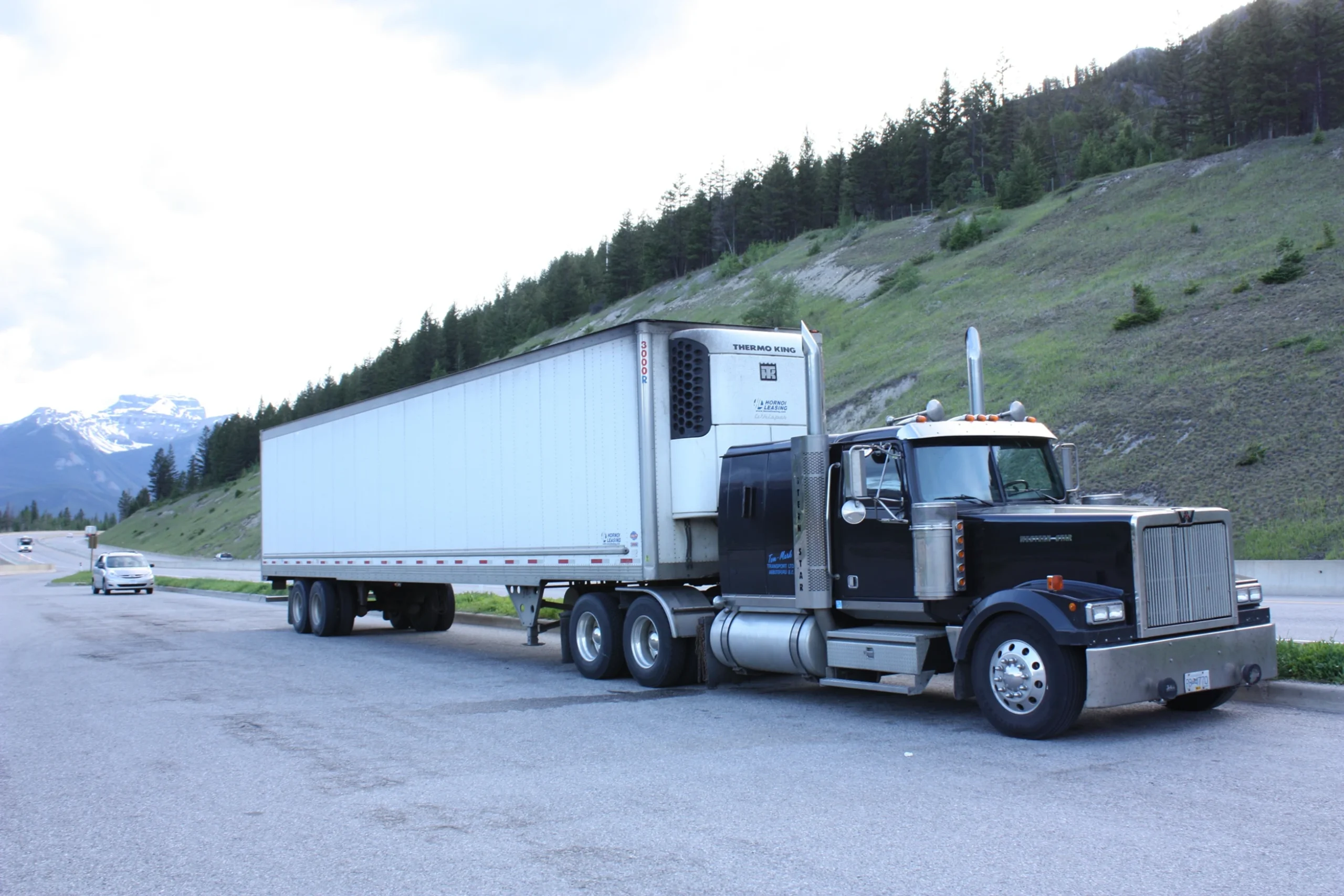
Complete Guide to DOT SAP & Return-to-Duty Program
The roads carry numerous lives on a daily basis. Safety is the primary responsibility of every driver. The Department of Transportation (DOT) guarantees this through rigid regulations on drug and alcohol usage. If drivers fail a test or cannot do it, they are required to undergo the DOT SAP and return-to-work program.
This guide will help you understand the SAP dot clearinghouse, the process, and how to return to work safely.
What is the DOT SAP Program?
SAP means Substance Abuse Professional. A SAP is a certified person who helps drivers return to work after a drug or alcohol violation.
The DOT SAP program is a must for any driver who:
- Fails a drug or alcohol test
- Refuses a test
- Has a positive test result recorded in the SAP clearinghouse
The SAP guides the driver through evaluation, treatment, or education, and follow-up steps. Only after completing the SAP process can the driver take the return-to-duty test and drive again.
What is the DOT Clearinghouse?
The clearinghouse drug and alcohol database is an online system. It holds records of drivers’ violations, SAP evaluations, return-to-duty test results, and follow-up testing plans.
Employers check the SAP clearinghouse before hiring any CDL driver. They also check it every year to see if current drivers have violations.
Steps in the DOT SAP & Return-to-Duty Program
Here is a simple guide to DOT SAP:
Step 1. Violation Recorded
When a driver refuses or fails a test, it is reported by the employer to the clearinghouse drug and alcohol database. The driver is taken out of safety-sensitive functions.
Step 2. SAP Evaluation
The driver must meet with a certified SAP. This is often a face-to-face meeting, but it can also be an online video in some cases.
During this evaluation, the SAP:
- Reviews the violation details
- Talks to the driver about the use history
- Decides the treatment or education needed
Step 3. Treatment or Education Program
The SAP creates a plan. It can include:
- Education classes on drug and alcohol risks
- Counseling sessions
- Treatment programs for substance use issues
The driver must complete the plan as instructed. The SAP may check progress with the treatment provider.
Step 4. Follow-Up Evaluation
After completing the plan, the driver returns to the SAP for a follow-up evaluation.
The SAP checks:
- If the driver completed the plan fully
- If the driver is ready to return to duty
If the SAP is satisfied, they clear the driver for testing.
Step 5. Return-to-Duty Test
The driver takes a return-to-duty drug test. This test must be observed. The result must be negative for the driver to start driving again.
The employer uploads the negative test result to the SAP dot Clearinghouse.
Step 6. Follow-Up Testing Plan
The SAP creates a follow-up testing plan for the driver. This includes:
- At least six unannounced drug and/or alcohol tests
- Tests spread over at least 12 months
- Testing can continue for up to five years, as decided by the SAP
Employers are responsible for carrying out this testing plan while the driver remains in safety-sensitive work.
Why is This Process Important?
The DOT SAP and return-to-duty program keep roads safe. It ensures that drivers with substance issues:
- Get proper help before returning to work
- Learn how to avoid risks in the future
- Stay under follow-up checks to maintain safety
This protects the driver, the company, and all people on the road.
Common Mistakes to Avoid
Many drivers and employers make errors that delay the process:
- Not registering in the clearinghouse
- Choosing an unqualified SAP
- Missing follow-up evaluations
- Returning a driver to work before SAP clearance
- Not conducting required follow-up tests
Employers need to have an understanding of the Difference Between non-DOT and DOT Drug Testing. That way, they can avoid these mistakes and ensure a quick and smooth return to duty.
How Long Does the SAP Program Take?
The time to complete the DOT SAP program depends on:
- The treatment or education required
- The driver’s commitment to finishing it
- Scheduling of SAP evaluations
Some drivers finish in a few weeks. Others take months if treatment programs are longer.
Who Pays for the SAP Program?
DOT rules do not say who must pay. Often, drivers pay for their SAP evaluations and programs. Some employers cover part of the cost as part of their company policy.
Choosing the Right SAP
It is very important to choose a qualified SAP. The SAP must:
- Have DOT-required credentials
- Be listed in the SAP dot Clearinghouse as a certified SAP
- Know DOT rules fully to guide the driver properly
Using a trusted SAP service ensures no errors in paperwork or reporting.
Final Words
The DOT SAP and return-to-duty program is strict but fair. It helps drivers return to work in a safe way. It also protects public safety on the roads.
Every driver and employer should understand this process well. Knowing each step saves time, avoids penalties, and keeps everyone safe.
About SAP Solutions
SAP Solutions offers fast and professional SAP services for drivers and employers. We have certified SAPs in every state. We guide drivers from evaluation to return-to-duty testing with care and respect.
Let SAP Solutions help you complete your Guide to DOT SAP process smoothly. Contact us today to get started on your path back to work.
Learn More
Department of Transportation SAP: Enhancing Efficiency and Compliance in Transportation
In the fast-paced world of transportation, companies and government agencies alike need to be efficient and follow the rules in order to be successful. The Department of Transportation (DOT) SAP (Substance Abuse Professional) program is very important for keeping the business safe, following the rules, and running smoothly.Never break the rules, especially when it comes to drugs. This is true whether they are going by truck, plane, train, or boat. This blog post has more information about the DOT SAP program and how it helps make transportation safer and faster.
How to Use the DOT SAP
People who work for the Department of Transportation SAP program and have broken rules about drugs or drinking can get help through the SAP program. There are rules like these that are followed by the Federal Motor Carrier Safety Administration (FMCSA) and other DOT offices to keep people and workers safe. A worker must go through the SAP process again before they can go back to work if they fail a drug or alcohol test.
The steps in the SAP process are:
1. Evaluation
A certified Substance Abuse Professional (SAP) looks at the employee’s case and decides what kind of treatment or education they need.
2. Treatment or Education: The worker goes through suggested programs like treatment, rehab, or learning about drug abuse.
3. Follow-up Evaluation: The SAP checks the employee again to see if they are ready to go back to work.
4. Return-to-Duty Test: The worker must pass a drug or alcohol test required by the DOT before they can go back to jobs that are dangerous.
5. Follow-up Testing: Random tests are given to the employee every so often for a certain amount of time to make sure they are still following the rules.
For the safety and drug-free work of the transportation business, this program is very important. People who break the rules are given the right help before they can go back to work.
Making compliance better with DOT SAP
1. Following the rules
The DOT SAP program makes sure that transportation companies follow government rules so that they don’t have to pay fines or face legal trouble. The Federal Railroad Administration (FRA), the Federal Aviation Administration (FAA), and other agencies strictly police compliance. Businesses must follow the rules in order to stay in business.
2. Making sure travel is safe
The DOT SAP program lowers the risk of accidents, improves workplace safety, and makes sure that only qualified and responsible people drive transportation vehicles by finding and helping workers who have problems with drugs.
3. Standardized Testing and Reporting
DOT rules say that all transportation areas must use the same drug and alcohol tests. The SAP program gives a structured way to keep an eye on things and send reports, making sure that everyone in the industry is honest and responsible.
4. Lessening the risk for employers
To stay out of trouble with the law, shipping companies must follow DOT rules. The SAP program helps businesses keep a “zero tolerance” policy on drug abuse, which lowers the chance of claims and lost money.
Improving Efficiency in Transportation
1. Faster rehabilitation for workers
Without the SAP process, workers who fail drug and alcohol tests would be fired for life, which would mean that there would be a lack of workers. The organized SAP program makes it possible for rehabilitation and reintegration to happen quickly, so there are fewer breaks in work.
2. Businesses have less downtime
A shipping company can’t afford to have too much downtime because of rules and regulations. Businesses can use the SAP program to effectively handle worker recovery, making sure that workers can get back to work as soon and safely as possible.
3. Made it easier for the government to do its job
These days, SAP service providers use digital tools to keep track of their employees’ progress, store evaluations, and make it easier for them to get back to work. This makes things run more easily and saves businesses time by cutting down on paperwork.
4. Friendly people at work
When SAP is run well, the workplace is safe and helpful, and people don’t have to worry about losing their jobs if they ask for help. This helps keep workers and makes them happier over time.
How to Pick the Best SAP Service Provider
Transportation companies need to work with qualified and certified SAP experts to make sure they follow the rules and help employees get back on track. When choosing a SAP service, here are some important things to keep in mind:
- Certification: Make sure the SAP expert is DOT-certified and has experience working with cases from the transportation business.
- Availability: For as little downtime as possible, the service should be able to offer quick assessments and flexible schedules.
- Tech Integration: A good SAP service uses online tracking systems to make it easy to file reports and follow the rules.
- Full Support: Look for service providers who do the whole process, from the first test to the tests that come after.
Conclusion
Making sure the shipping business is safe, legal, and efficient is a big part of the DOT SAP SOLUTIONS. Making sure that rules are followed, lowering dangers, and speeding up the process of retraining workers are all good things about the program.
When transportation companies put money into a good SAP program, they not only make sure they follow DOT rules, but they also make their business run more smoothly and make sure their workers are healthy and happy. Company can keep a drug-free, safe, and efficient staff by picking the right SAP provider and following structured rehabilitation processes.
Learn More
How the Clearing House SAP Program Helps CDL Drivers Get Back to Work
A driveway is usually one of the first things people notice when they come to your home or business. Over time, weather, vehicle damage, and other outside things can affect how it looks and works. Sealing your driveway helps to protect it and makes it look better. In this blog, we will look at what driveway sealing looks like before and after it’s done. We will also see how DOT SAP Solutions can help achieve better results.
We will look at how the Clearinghouse SAP Program works, how it helps CDL drivers, and what steps are needed to return to work.
Understanding the Clearinghouse SAP Program
The Clearinghouse SAP Program is a government rule managed by the government Motor Carrier Safety Administration (FMCSA). It keeps track of drug and alcohol violations for CDL drivers and makes sure they finish the required steps before they can return to safety-related jobs.
If a CDL driver fails a drug or alcohol test, it is noted in the FMCSA Clearinghouse. This means they cannot drive commercial cars until they finish the Return-to-Duty (RTD) process. The SAP Program is made to help them through this process.

Steps for CDL Drivers to Return to Work Through the SAP Program
CDL drivers who fail a drug or alcohol test must follow these essential steps to return to duty:
1. Enrollment in the Clearinghouse SAP Program
After a violation is noted, the CDL driver needs to find a trained Substance Abuse Professional (SAP). The FMCSA Clearinghouse has a list of approved SAPs who are taught to assess drivers and suggest help or instruction.
2. Initial SAP Assessment
The SAP does a thorough evaluation, either in-person or online, to assess how bad the driver’s drug use issues are. After this review, the SAP will decide what to do next. This might involve:
Education activities
Counseling meetings.
Treatment services
3. Finishing SAP Suggestions
The driver must finish the education or treatment plan given by the SAP. This may include:
Courses on drug abuse knowledge are available online and in person.
One-on-one or group therapy meetings.
Rehabilitation programs can be done either as outpatient or hospital services.
4. Check-up review by the SAP
After completing the necessary training, the CDL driver has a meeting with the SAP for a follow-up. The SAP determines if the driver is ready to take the Return-to-Duty test.
5. Successfully Completing the Return-to-Duty Drug Test
After the SAP approves, the CDL driver must take a drug and/or alcohol test that follows DOT rules. This test needs to be done while being watched to make sure it’s accurate.
6. Letting Employers Know and Getting Approval
If the driver successfully completes the RTD test, the negative result is recorded in the FMCSA Clearinghouse. The boss can verify if the driver is permitted to go back to safety-sensitive work.
7. Plan for Follow-Up Tests
The driver must continue to follow the testing plan set by the SAP even when they return to work. This generally includes at least six surprise drug or alcohol tests each year, but it can continue for up to five years depending on the SAP’s advice.

How the Clearinghouse SAP Program Helps CDL Drivers
The Clearinghouse SAP Program isn’t just a punishment; it’s a chance for CDL drivers to start over. Here’s how it can help:
1. Gives a straightforward way to get back to work.
For CDL drivers, a drug or drink violation can seem like the end of their job. The SAP program offers a clear, approved way to get your job back after an issue with FMCSA.
2. Makes sure to follow DOT rules.
By completing the SAP Program, drivers show that they are dedicated to safety and following FMCSA rules, which makes them suitable to be hired again.
3. Helps with Staying Sober and Taking Responsibility
The program focuses on education, therapy, and recovery to help drivers deal with drug use problems and stop them from breaking the rules again.
4. Helps Employers Regain Trust in Drivers
Employers want to be sure that drivers are capable of doing their job. Finishing the SAP Program shows that a driver is safe, responsible, and prepared to go back to work.
5. Keeps People Safe
The program makes sure that only sober and responsible drivers can use the roads, which helps make highways safer.
Conclusion
The Clearinghouse SAP Program assists CDL drivers in getting back to work after they fail a drug or alcohol test by the DOT. The program helps CDL drivers get back to work by offering a simple process, linking them with certified SAP workers, and making sure they follow FMCSA regulations. This gives drivers a fair chance to keep their jobs.
CDL drivers who finish the SAP program can return to work and show that they prioritize safety and responsibility when driving. Employers gain by choosing drivers who follow the rules and are free of drugs, which enhances safety and dependability in the transportation field.
Learn More
DWI Assessments: Key Factors That Influence the Results
Driving While Intoxicated (DWI) tests are important that are used to find out how much someone is drinking or using drugs and how that affects their ability to drive. These DWI assessments are very important for deciding legal outcomes, treatment plans, and getting your driving rights back.
It is important for both people going through the DWI process and the people giving the tests to understand the main factors that affect the results.
1. History of drug use
A thorough look at a person’s past of drug use is an important part of a DWI evaluation. Evaluators look at trends, like how often and how much someone drinks or drugs. This includes listing any past cases of driving while impaired or other related crimes. An exact account helps figure out how bad the drug use is and how likely it is that the person will do it again.
2. Health, both physical and mental
The person’s physical and mental health have a big effect on the results of the exam. People with disabilities like vision or hearing loss, delayed development, or mental illnesses may have trouble with both the test and their ability to drive. These things are taken into account by evaluators to get a full picture of the person’s situation.

3. Problems with people and the environment
Addiction behaviors can be affected by a person’s social setting, which includes their friends, family, and job. For example, hanging out with friends who drink or use drugs a lot might make you more likely to do the same things. Understanding these social factors helps people come up with good ways to help.
4. Family history and ways to get help
People who have a family background of substance abuse or mental health disorders may be more likely to face similar problems. The presence or lack of a supportive family network is also taken into account during both the assessment and the planning of treatment that follows. A strong support system can help someone get better, while not having one may mean they need more help.
5. Risk and Safety Factors
Evaluators look at a number of risk factors that may lead to substance use, such as adverse childhood experiences (ACEs), income, and employment situation. On the other hand, protective factors like stable work, good social relationships, and easy access to health care can lower these risks. By weighing these factors, you can get a more complete picture of the person’s situation.
6. Following the rules for treatment and the law
The results of an assessment depend on how willing the person is to follow the law and go to treatment programs that are suggested. Demonstrating responsibility and a commitment to change can positively affect legal choices and the structuring of intervention plans.
7. Accuracy and Honesty During Assessment
The reliability of the assessment heavily relies on the individual’s honesty in disclosing information. Giving correct information about drug use patterns, medical background, and social situations helps evaluators make smart choices and make sure that interventions are tailored to the right person.

In conclusion
Driving While Intoxicated (DWI) tests are thorough tests that look at many things, like a person’s health and social life. Not only does recognizing and knowing these key elements help with fair evaluations, but it also helps with making treatment and intervention plans that work. If you are being tested for DWI, being honest and cooperative can help you get better results and deal with problems that may be causing your drug use. Companies like DOT SAP Solutions are experts at doing these kinds of thorough reviews, making sure that people get the right help and advice throughout the process.
Learn More
Demystifying DOT SAP Evaluations: Everything You Need to Know
Introduction
The world of transportation and logistics is highly regulated to ensure safety on the road. One critical aspect of these regulations involves substance abuse evaluations, often referred to as SAP evaluations. Whether you’re a commercial driver looking to comply with Department of Transportation (DOT) regulations or someone searching for a “SAP evaluation near me,” understanding the process is essential. This guide will walk you through everything you need to know about DOT SAP evaluations, particularly in California and Sacramento, and how they fit into the broader landscape of substance abuse evaluations and DOT regulation violations.
What is a DOT SAP Evaluation?
A DOT SAP evaluation is a thorough assessment conducted by a Substance Abuse Professional (SAP). It is required for employees in safety-sensitive positions who have violated DOT drug and alcohol regulations. These evaluations are crucial for ensuring that individuals who have tested positive for drugs or alcohol, refused testing, or otherwise violated DOT regulations are fit to return to their duties.
Why Are DOT SAP Evaluations Important?
DOT SAP evaluations play a vital role in maintaining safety on the roads. They help identify substance abuse issues and ensure that employees receive the necessary treatment before resuming their roles. This process not only protects the individual but also the public from potential hazards related to impaired driving.
The SAP Evaluation Process

1. Initial Evaluation
The process begins with an initial evaluation, where the SAP will assess the extent of the individual’s substance use problem. This step involves a comprehensive interview and may include standardized testing to determine the level of substance abuse.
2. Treatment Recommendation
Based on the initial evaluation, the SAP will recommend a course of treatment. This could range from education programs and counseling to more intensive rehabilitation programs, depending on the severity of the substance abuse issue.
3. Follow-Up Evaluation
After the individual has completed the recommended treatment, a follow-up evaluation is conducted to determine their readiness to return to duty. The SAP will verify that the person has complied with the treatment plan and is no longer a safety risk.
4. Return-to-Duty Testing
Before resuming their duties, the individual must undergo a return-to-duty drug and alcohol test. This test ensures that they are free from substances and fit to safely perform their job responsibilities.
5. Follow-Up Testing
Even after returning to work, the individual will be subject to unannounced follow-up testing. This ongoing monitoring helps ensure that they remain substance-free and compliant with DOT regulations.
Finding a SAP Evaluation Near You or Online
If you’re searching for a “SAP evaluation near me,” there are several ways to find a qualified SAP professional. You can start by checking the DOT’s list of certified SAPs or searching online directories. For those in California, particularly in Sacramento, there are numerous providers specializing in DOT SAP evaluations. Us being one of them.
SAP Evaluation in California and Sacramento
California has a robust network of SAP professionals who are well-versed in DOT regulations and substance abuse issues. Sacramento, as a major hub, offers several options for those needing SAP evaluations. When choosing a provider, ensure they are DOT-certified and have a good reputation for thorough and fair evaluations.
DOT Regulation Violations and SAP Programs
Violating DOT regulations can have serious consequences, including suspension from duty and mandatory SAP evaluations. SAP programs are designed to address these violations comprehensively. They include education, counseling, and follow-up testing to ensure that individuals can safely return to their safety-sensitive roles.
Resources
For further information, consider visiting the Federal Motor Carrier Safety Administration (FMCSA), and the Substance Abuse and Mental Health Services Administration (SAMHSA). These sites provide extensive resources on DOT regulations, SAP evaluations, and substance abuse treatment.

FAQ
What is a DOT Substance Abuse Evaluation?
A DOT substance abuse evaluation is an assessment conducted by a Substance Abuse Professional (SAP) for employees who have violated DOT drug and alcohol regulations. It determines the extent of the substance abuse issue and outlines a treatment plan to address it.
How Long Does the Evaluation Take?
The initial SAP evaluation typically takes about 1-2 hours. However, the entire process, including treatment and follow-up evaluations, can vary depending on the individual’s compliance and the severity of their substance abuse problem.
What Happens After the Evaluation?
After the initial evaluation, the SAP will recommend a treatment plan. Once the individual completes the treatment, a follow-up evaluation will be conducted. If the SAP determines that the individual is fit to return to duty, they must pass a return-to-duty test and will be subject to follow-up testing to ensure ongoing compliance.
For more tips on how to prepare for your evaluation read: 5 Key Steps for Successfully Preparing for a DOT Substance Abuse Evaluation
Conclusion
Understanding DOT SAP evaluations is crucial for anyone in a safety-sensitive position or involved in transportation and logistics. These evaluations help ensure that individuals who have violated substance abuse regulations receive the necessary treatment and can safely return to their duties. Whether you’re in California or anywhere else, finding a qualified SAP professional is the first step towards compliance and safety on the road.
Thank you for taking the time to read this guide. We hope it has provided you with valuable information and clarity on DOT SAP evaluations. If you have any further questions or need assistance, please feel free to contact us through WhatsApp, chat, or our contact form. We’re here to help you every step of the way.
For more insights on DOT SAP evaluations, be sure to check out our other posts on:
- Key Reasons for DOT SAP Substance Abuse Evaluations
- 5 Key Steps for Successfully Preparing for a DOT Substance Abuse Evaluation
- The Impact of DOT SAP Substance Abuse Evaluations on Employment
- Essential Steps After Failing a DOT Substance Abuse Evaluation
- DOT Substance Abuse Evaluations: Safeguarding Public Safety
- Key Considerations for choosing the right DOT SAP evaluation after a violation
All the best,
Rod
Learn More